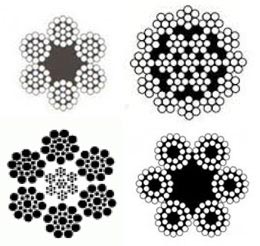 Wire ropes are used in many applications and industries. Diverse types of ropes are available to meet the individual requirements of specific applications. It is important to utilize a rope designed to function optimally in the conditions in which it’ll be used. Choosing the wrong ropes often ends in dangerous and expensive scenarios. Wire ropes are used in the following:
Wire ropes are used in many applications and industries. Diverse types of ropes are available to meet the individual requirements of specific applications. It is important to utilize a rope designed to function optimally in the conditions in which it’ll be used. Choosing the wrong ropes often ends in dangerous and expensive scenarios. Wire ropes are used in the following:
· Engineering
· Agriculture
· Infrastructure
· Aircrafts
· Marine Industries
· Building/Construction
Wire Rope
Wire ropes should not be used interchangeably because diverse types have distinctive characteristics. For instance, some ropes are better suited for extreme weather conditions, and others for abrasion resistance. Below, we will highlight the three most common types of wire ropes used and their basic characteristics (differences).
Stainless steel is considered the standard in the industry for making cables and ropes. This rope easily withstands corrosion (more than galvanized and coated ropes). Stainless steel wire ropes are commonly used in saltwater-based industries/locations. This type of steel does not readily react to chemicals (textiles, photographic settings, food processing). The rope can safely resist cold and heat without compromising functionality. Stainless steel is also used in building automobiles, precision instrumentation, and petrochemical equipment.
Coated wires have a steel or galvanized base and a vinyl or polyvinyl-chloride coating. Coat wires come in a variety of assorted colors that are beneficial to various industries. After coating wires with PVC, they become more flexible, cost-effective, and weather resistant. Nylon coatings are not as flexible as PVC, but nylon is abrasion-resistant and ideal for extremely cold temperatures.
Galvanized wire ropes are made from a steel material that has undergone galvanizing: a process to increase overall corrosion resistance. Final wires are immersed in a zinc bath to coat materials completely.
Related Reading about Wire Rope